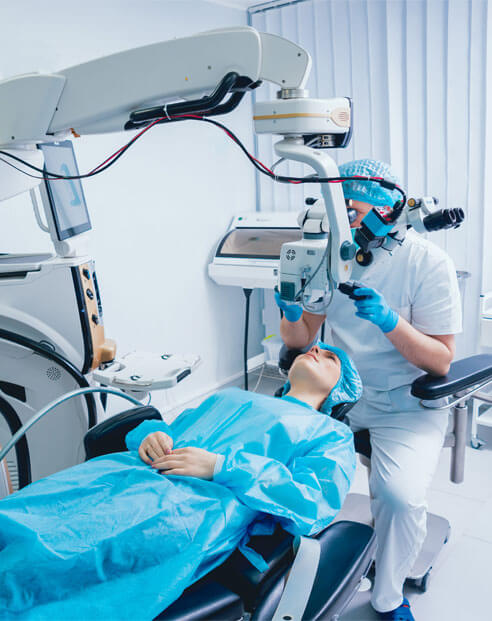People who suffer from vision problems typically use glasses or contact lenses to correct their vision. However, more and more people are turning to surgery to address these problems, and many are using LASIK.
What is Lasik?
LASIK is a corrective eye surgery procedure for myopia of the eyes. Visual correction is achieved with a special laser that reshapes the cornea to change its focusing power.
With nearsightedness, farsightedness, or astigmatism, the environment typically appears blurry and unclear. The LASIK technique changes the refractive power of the cornea so that blurred vision is corrected. Then the light that passes through the cornea can finally reach the retina properly. The patient can then achieve optimal vision without glasses or contact lenses.

Get a free quote or make an appointment.
Patient guideWhat is the price of Lasik in Turkey?
The price of Lasik surgery with Medespoir Turkey is a discounted, competitive, all-inclusive price. It includes the price of the procedure, doctors' fees, post-operative care costs and the stay at the clinic. Request a free quote online to get a cheap Lasik Turkey price.
How does laser eye surgery work in Turkey?
In subjects with optimal vision, images are "projected" onto the retina, located at the back of the eye. In contrast, in the presence of visual impairment, images end up being projected onto different areas, resulting in poor clarity.
This image shows how the light from myopia hits the front of the retina incorrectly.
LASIK technology comes into play for the correction of these visual defects because it is able to modify the surface of the cornea in a way that directs the focal point to the correct section of the retina. The reshaping of the cornea is performed with a laser. The surgeon creates a flap of corneal tissue, called a flap, which is then lifted to allow the laser to work in the underlying layer of the cornea.
Steps in surgery
As with all laser eye surgery methods, your visual acuity must be stable for at least one year before you can undergo LASIK surgery. The eye must also be free of any disease (such as cataracts or retinal disease).
- Laser eye surgery can take anywhere from 15 to 30 minutes, depending on the type of surgery needed and the patient's personal needs.
- Before the surgeon begins using the laser, the patient's eye will be locally anesthetized.
- Using an instrument called a microkeratome, the surgeon cuts a thin flap of corneal tissue (the "corneal flap"), then lifts it to the side, like a book cover.
- The deep layers of the cornea are then flattened (for nearsighted) or thickened (for farsighted) with a laser. The ultraviolet light can remove microscopic amounts of tissue from the cornea so that the light can focus more precisely on the retina. Myopia and hyperopia are not the only visual problems that can be treated with lasers. Excimer lasers, for example, are also able to correct astigmatism by reshaping the irregular cornea.
- At the end of the operation, the flap closes on itself and the tissue closes on its own. However, the cornea will lose its mechanical strength, a drawback that cannot be avoided at this time.

Schedule Consultation and receive your Free Quote
Patient guideTime
How long does it take to recover from Lasik surgery?
In most cases, the patient returns to activity within a few hours after the surgery is complete.
Over time, the patient's eyes will steadily improve. It will then be possible for the patient to return to work a few days after surgery and resume daily activities. However, it will be necessary for a period of time to carefully clean the eyes daily and avoid sports activities.
Many patients complain of dry eye and foreign body sensation in the eye after surgery. In addition, glare may occur at night. Light-related phenomena are also common after LASIK surgery. These symptoms usually disappear within the first three months.
Operational Sequences
What are the postoperative consequences of Lasik in Turkey?
- Discomfort such as mild irritation and sensitivity to light (for the first few days).
- Glare and light reflections in poorly lit environments
- Dry eyes
- Blurred vision
- Diminished visual acuity
In the majority of cases, however, these are temporary problems that disappear three to six months after surgery.

